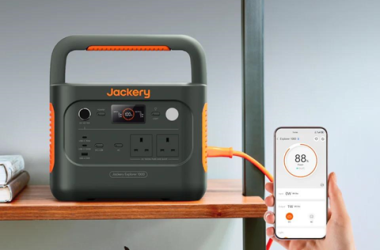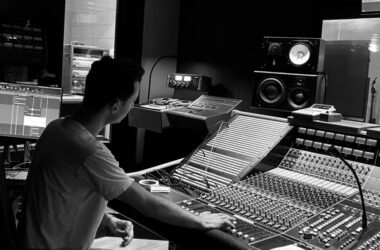Content
- Introduction
- What is Mastering?
- How to Master a Song at Home
- Not Just EQ and Compression
- Not Just EQ and Compression
- Gain Staging and Limiting
- How to Know if Your Mix is Ready to be Mastered
- Working with a reference tracks
- The Limiter is Your Best Friend
- Add the Final Touch of Limiting with a Maximizer
This is article is brought to you by One Submit, a music submission platform
Introduction
Mastering is the final step in producing a song, and it’s important that you master your music right. Mastering can make the difference between an amateur sound and professional quality.
Mastering engineers work to perfect the sound of the music track and master music throughout out the mastering process. Audio mastering is not complicated to learn, but it takes time to perfect your hearing capabilities.
Here’s how to get started with mastering your own music at home:
What is Mastering?
Mastering is the final creative step in the recording process. It’s where your music gets polished, mixed and finished.
Mastering isn’t just about loudness, though that’s often what people think of first when they hear it mentioned. A mastering engineer will work with you to help you make sure all of your songs sound their best—from making sure your vocals are clear and balanced with instruments like guitars or drums to creating an overall pleasing mix that complements each track on the album. Mastering stage is done after the final entire mix stereo track is done by the artist. the audio file should be 44khz, 16 bit minimum, it could be 48khz, 24bit for better results.

How to Master a Song at Home
Mastering is the process of making your mix sound as good as possible. It involves adjusting the levels and frequencies of each track, so that they all play at the same volume level, while preserving their relative dynamic range (the difference between loud and quiet parts). A good mastering engineer will also use compression to even out the loudness across songs so they don’t jump out at you when you listen to an entire album or playlist.
Mastering is what makes your music sound professional: it brings out subtle details in your instrumentation and vocals, balances out individual elements that might otherwise compete with one another for attention (e.g., drums), and prevents any weak tracks from detracting from stronger ones by bringing them up in volume level or bringing down strong ones so they won’t overpower each other (or worse yet clash). It may also involve EQ adjustments to further sculpt how different instruments interact with one another in terms of frequency response—for instance using a high pass filter on low end instruments like kick drums so that their fundamental frequencies don’t interfere with guitar tones more than necessary
Not Just EQ and Compression
While EQ and compression are two of the most important tools in your mastering toolkit, they aren’t the only ones. You can use other techniques to improve your final mixes and ensure they are ready for a great sounding record. Using these additional techniques to handel the tracks frequency spectrum will give you a fuller sound, which will make it easier for listeners to enjoy your music without getting distracted by technical issues.
- Dynamics processing – This allows you to control how loud or soft different parts of a song sound by changing their volume over time. If a track starts out quietly but gets louder as it goes on, this would be an example of dynamics processing at work!
- Stereo image manipulation – This is similar to dynamics processing; however it focuses on making sure that each element in a mix sounds like it belongs in its own place within the stereo field rather than being spread out across the entire spectrum (like dynamic panning). Having good stereo imaging makes everything feel more immersive immediately upon listening – no need for searching through complicated settings just yet!
- Reverb – Adding reverb creates depth by allowing instruments/voices etcetera sound like they’re coming from somewhere else instead of right beside us – just like real life!
Gain Staging and Limiting
As you might have guessed, gain staging is the process of setting the gain on each track to the optimum level. It’s also called gain reduction and has been made famous by its use in music production software such as Pro Tools.
Gain staging is one of the most important parts of mixing because it directly affects what your mix sounds like. The goal is to get as much signal out of each channel as possible without clipping or distorting it. This means that when you go back and listen to a recording, all of your tracks should be at about 0dBFS (or thereabouts). If any tracks are louder than others, then you need to adjust their volume first before moving on with any other steps in your mixing process

How to Know if Your Mix is Ready to be Mastered
Once you’ve completed your mix, it’s time to start getting feedback from others.
Before bringing the mix to a professional mastering engineer, there are a few things you can do:
- Listen to other masters for reference. A great way to get ideas about what may be working well in your track is by listening closely to other masters that have been mastered by professionals. You might be surprised at how much more clarity and punch they have when compared with your own work!
- Listen on different speakers and environments. Make sure you’re hearing everything clearly as an objective listener would hear it, not just how you hear it while mixing or mastering yourself. Hearing what sounds good will help guide your decisions when mixing and mastering later down the line—and having fresh ears on board is always beneficial!
Working with a reference tracks
Working with a reference track can be very helpful. sometimes you need to compare your track sounds to another stereo mix to understand if your audio mastering sounds good.
Sometimes your audio mastering sound amazing, some times when you comparing your work to a reference, you realize that your stereo width does not sound so good.
Always use a reference tracks, try to find a reference track within your music genre.
The Limiter is Your Best Friend
Limiting is the last step in mastering music. It’s also the first thing a lot of amateur engineers do to their mixes and then wonder why they don’t sound good.
A limiter is just like a compressor with a higher threshold, meaning that it only kicks in when you start pushing your signal beyond a certain point (usually around 0dB). You can think of it as “stopping” the audio from getting louder, but without actually changing its shape — unlike compression which squashes the waveform and often adds distortion.
Limiting isn’t about making things loud, it’s about preserving their quality — like when you go up an elevator and your ears pop because there’s less air pressure at high altitude. This usually happens below -6dB or so depending on how soft you want things to be at lower volumes too (though some argue against this).
Add the Final Touch of Limiting with a Maximizer
- Add the Final Touch of Limiting with a Maximizer
Adding limiting in the final stage will help you get clean and punchy tracks. This is especially important if you’re working with samples or other recordings that are distorted, like a live recording that has too much high-end noise or distortion from an overdriven amp. A maximizer can also help bring out subtle details in your mix that can make it sound more polished and professional.
- Use It Sparingly
Although they may offer some extra polish to your tracks, limiters should be used sparingly because they squash dynamics and add distortion to the mix over time if used excessively (I’m looking at you, Auto-Tune). That being said, a little bit goes a long way—and there’s no rule against using two limiters: one for overall compression and one for limiting specific frequencies (like bass).
What’s next ?
Now that you’ve finished up your track and you’re all set and ready for promoting it,
You are more than welcome to visit One Submit, it’s a music submission platform that help artists get their music on Spotify Playlists, Blogs, Radio Stations, YouTube channels, TikTok, Labels and more.
Conclusion
In conclusion, mastering is an essential part of the recording process that everyone needs to master. It’s not just about mixing, but also about setting up your tracks so they sound their best when it comes time to master them to the final master. With a little practice and some good advice from experienced engineers, you can master your entire track at home. When you reach a confident level to master your own mixes, becoming a mastering engineer is a quick ticket to get you into the music industry.
Good luck







